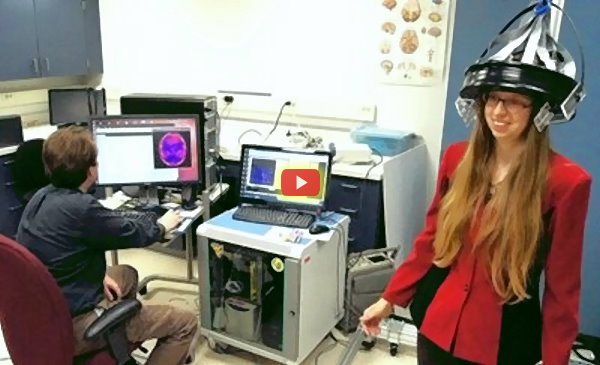One of the many miracles of modern medical science is a process called “positron emission tomography,” or PET. This is the technology that makes it possible for neuroscientists to map human brain activity under different conditions. You’ve probably seen some of these images that compare what a subject’s brain is doing while thinking about one activity or concept compared with another. One major limitation of this technology is that the subjects must lie very still with their heads inside a giant doughnut-shaped scanner while the imaging takes place.
There are many reasons that doctors and scientists might want to be able to see what’s going on in a patient’s brain while performing an activity, such as walking. A team of researchers at Western Virginia University, working in partnership with experts at University of Virginia, University of California – Davis, University of Washington, and General Electric, are working to create a PET helmet that a test subject can wear while moving around. The system relies on sensors that are just a fraction of the size and weight of the devices used in a traditional PET scanner. This makes it feasible to build them into a helmet that is light enough for a patient to wear during testing. This has two additional benefits; researchers can use much smaller doses of the radioactive tracer molecules required for the imaging, and the smaller scanners can produce much higher resolution images.
The wearable PET project has been awarded more than $1.5 million in one of the first BRAIN (Brain Research through Advancing Innovative Neurotechnologies) grants from the National Institute of Health. This new technology holds the promise to understand and treat a wide range of conditions, ranging from stroke and brain injuries to Alzheimer’s and depression.



Trackbacks/Pingbacks